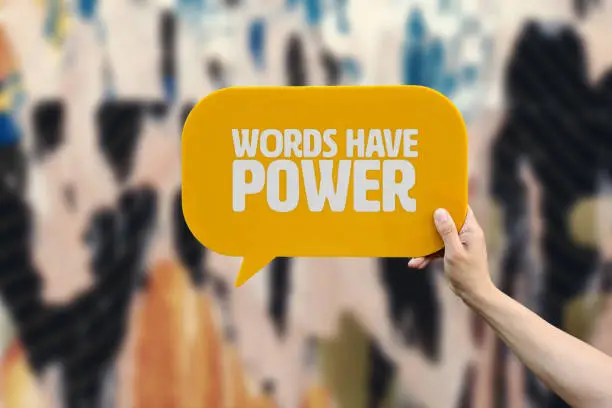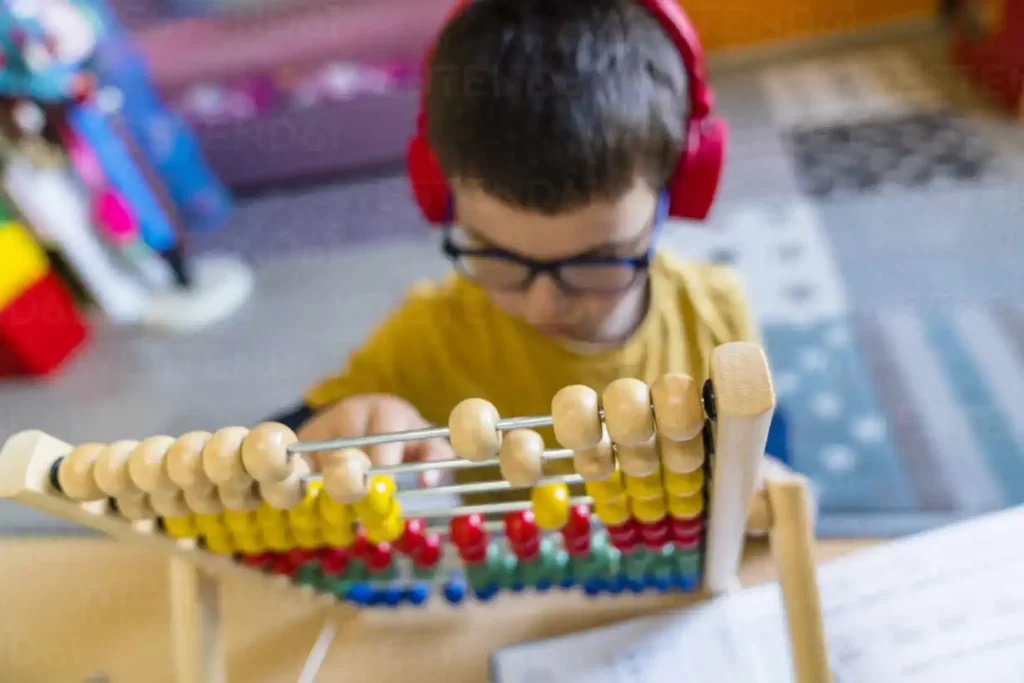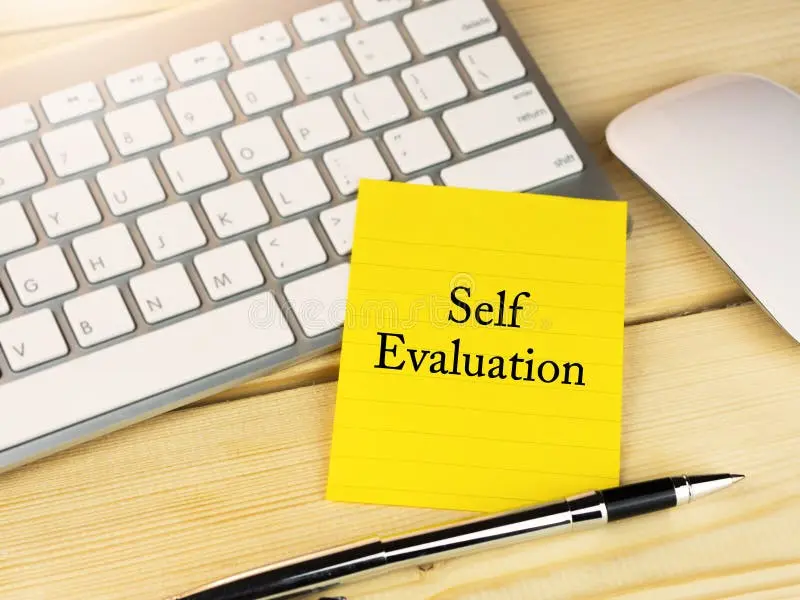Many people expect teacher’s responsibilities is to inspire students via exciting classroom lessons, creative assignments, and an enthusiastic personality that challenges students to be superachievers, but the best way for students to improve their skills is to get specific feedback and advice from their teachers. This feedback and advice helps you to focus on what you need to do to maximize students’ potential.
Below are 14 tips for teachers or parents on how you can improve each student’s academic performance via one-on-one private conversations.
14 tips on how to improve each student’s academic performance
- Be Specific In Your Praise
- Set High Expectations
- Simplify The Skill Categories
- Utilize real world interesting examples
- Establish culture of evidence and justification
- Encourage Independent Reading
- Introduce new “power word” every day
- Have students think with numbers every day
- Maximize students’ engagement time
- Ensure students’ understanding on new concept
- Include formative assessment
- Use the feedback loop concept
- Discuss Students’ Future
- Self-assess regularly

1. Be Specific In Your Praise
The praise should be as specific as possible because students can detect flettery. If you are analyzing a math problem, you could praise the student’s effort and work ethic. THEN, you can get into the flaws. Many people have told me they hate math because a teacher emphasized on only the final answer. Stressing the negative can discourage students from improving an important skill.

2. Set High Expectations
Emphasize in your first meeting that you have high expectations for EVERY student. Students with mediocre or worse grades might have low expectations because they’ve struggled in school for years. It’s YOUR job to boost their confidence and tell them that every student has skills that will help them succeed in life even if the student is unaware of those skills or their skills haven’t helped their grades. Tell students that you will work with them to find and/or improve those skills. Be clear that you will insist on high expectations throughout the school year.

3. Simplify The Skill Categories
Giving students detailed advice is crucial, but you should simplify your overall analysis of their work. You should summarize their performance once each session. Don’t list more than five or six skills. Which skills you list depends on what subject you are teaching, but examples of skills are working with classmates, problem solving, creative thinking, analytical thinking, research, writing, speaking, reading comprehension, and completing assignments effectively. Using the same categories throughout the school year makes it easier for students to follow their progress.

4. Utilize real world interesting examples
If you’re a Math teacher, you might be frustrated that so many students hate Math. Perhaps, though, a few students love basketball. Instead of giving them a Math problem out of a textbook you can ask them to figure out LeBron James’ scoring average by having them add how many points he scored in each game and then dividing that total by the number of games. Yes, that approach worked for me with one student. Check out creative ways to get students excited about math in real world.

5. Establish culture of evidence and justification
It’s true that “everyone is entitled to an opinion,” but everyone must be prepared to justify an opinion, using evidence. From now on, make this a rule, for yourself and for your students. Always ask, ‘How do you know that’s true?” “What is your evidence?” Never allow someone to say, “It’s just my opinion” or “I don’t know why I think that.”

6. Encourage Independent Reading
Reading is the key to everything, and yet most students don’t read enough. Consider setting a goal of doubling the amount of text that students are reading every day—but make sure the reading is manageable, enjoyable, and personally relevant. Also, have students talk about what they read, and write about it. The ultimate goal is to get kids “hooked on reading”.

7. Introduce new “power word” every day
“Power words” are abstract vocabulary words that are useful for thinking and talking about content. Power words are words like perimeter, inference, hypothesis, and category. They are the kinds of words that appear in the prompts to test items. Power words help young people think, and express their thoughts, at a higher level.

8. Have students think with numbers every day
Spend at least part of every class period counting, measuring, estimating, calculating, etc. Where appropriate, insist on quantitative evidence. Ask questions like “How many?” “What percentage?” Display data in tables, graphs, and other visual forms—but always emphasis meaning and analysis, not just the collection of data. If they don’t know, break it down and make math easy to understand.

9. Maximize students’ engagement time
In many classrooms, students spend a great deal of time chatting, sharpening pencils, arguing about grades or homework assignments—and engaging in other activities that are not directly related to the content. In many classrooms, a few students get most of the attention. Take steps to ensure that all students are engaged in the academic content as much as possible at all times.

10. Ensure students’ understanding on new concept
Use performance assessments to ensure mastery and understanding. Use cooperative learning and other strategies to ensure that students take responsibility not just for their own learning, but for the learning of others. Have all students show they understand. Establish a classroom culture of asking for clarification and help—and make sure all students get the help they need. Don’t let anyone fall through the cracks.

11. Include formative assessment
Royce Sadler, Professor Emeritus at Griffith University, suggests that students must be able to understand quality work and be able to asses the quality of their own work. Give your students examples of quality work so they have something they can compare their work to and can identify their learning gaps themselves. This helps to show where students need improvement. Students become more motivated about learning and confident in their abilities.

12. Use the feedback loop concept
This involves teachers and students simultaneously collecting and analyzing student learning information to determine where students are and where they need improvement. Students’ movement from one learning target to another works best when students receive feedback to help them improve. Students rely on feedback and, without it, their chance for remaining engaged learners spirals downward.

13. Discuss Students’ Future
Many students won’t understand this zealous effort to improve their skills. They think their skills are fine, particularly if they get good grades. It’s YOUR job to emphasize that they might need to improve many of their skills if they want to excel in college, graduate school, and the workplace. Telling them about your experiences or the experiences of others as you or they struggled to make the transition from high school to the next level is beneficial. Besides, you want to tell students that they should WANT to maximize their potential. Praise them as they improve.

14. Self-assess regularly
Teachers should self-assess how well they perform these three actions:
- My students clearly see how one day of learning builds on the next day of learning.
- I create opportunities where my students receive continuous and specific feedback that helps them improve.
- I consistently recognize my students’ strengths.
Now that I have given you 14 tips for how you can improve each student’s performance via one-on-one private conversations, I have a tip for how you can improve your own performance — don’t overwork. Work smarter and harder, but you don’t necessarily have to spend more time working.
Working smarter might mean fewer classroom lectures and replacing them with interesting assignments for students as you talk to one of their classmates. Working harder might mean improving your time management skills.
Or you can tell your principal that you want to be paid more because of your remarkable dedication to the academic success of your students. That’s a joke. Good luck!!
I know a lot of folks whom I think would really enjoy your content that covers in depth. I just hope you wouldn’t mind if I share your blog to our community.
Your posts in this blog really shine! Glad to gain some new insights, which I happen to also cover on my page.
Your posts stand out from other sites I’ve read stuff from. Keep doing what you’re doing!
Keep this going please, great job!
Thanks on your marvelous posting! I certainly enjoyed reading it,
you will be a great author.I will remember to bookmark your blog and will eventually
come back very soon. I want to encourage one to continue your great work,
have a nice weekend!
You are really a excellent webmaster. The website loading velocity is
amazing. It seems that you are doing any unique trick. Furthermore,
The contents are masterpiece. you have performed a great task on this subject!
I was suggested this web site by my cousin. I am not certain whether this post is written via
him as no one else recognize such distinctive about my problem.
You are amazing! Thanks!
Thank you for some other informative web site. Where else may I get that kind of information written in such an ideal manner?
I have a challenge that I’m just now running on, and I’ve
been on the glance out for such information.
First off I would like to say excellent blog! I had
a quick question that I’d like to ask if you do not mind.
I was interested to know how you center yourself and clear your thoughts before writing.
I’ve had a difficult time clearing my mind in getting my thoughts out.
I do take pleasure in writing however it just seems like the first 10 to 15 minutes are generally
lost just trying to figure out how to begin. Any recommendations or tips?
Cheers!
Peculiar article, exactly what I was looking for.
I’m very pleased to discover this website. I need to to thank you for your time just for this fantastic read!!
I definitely enjoyed every part of it and i also have you book-marked to look at new information in your blog.
I’m amazed, I must say. Rarely do I come across a blog that’s both equally educative and entertaining, and let me tell you,
you’ve hit the nail on the head. The issue is something not enough folks are
speaking intelligently about. Now i’m very happy that
I found this during my search for something concerning
this.
I visited several websites however the audio feature for audio songs existing at
this website is genuinely marvelous.
You could certainly see your skills in the work you write.
The world hopes for even more passionate writers such as you
who are not afraid to say how they believe. At all times go after
your heart.
Hey there! Quick question that’s entirely off topic.
Do you know how to make your site mobile friendly?
My website looks weird when viewing from my apple
iphone. I’m trying to find a template or plugin that might be
able to resolve this problem. If you have any recommendations, please share.
Thank you!
Yes, you can find templates on Themeforest or use WordPress. We also offer these services!
Hello, constantly i used to check website posts here in the early hours in the break of day, as i enjoy to
learn more and more.
Howdy are using WordPress for your blog platform? I’m new to the
blog world but I’m trying to get started and create my own. Do you need any
html coding expertise to make your own blog? Any help would be greatly
appreciated!
Thank you for your interest in my blog’s design! Yes, I’m using WordPress as my platform of choice. Its flexibility and extensive range of themes and plugins make it a popular option for many bloggers. I find it user-friendly and adaptable to various design preferences, and it doesn’t require any HTML coding experience.
Additionally, I offer WordPress website design services to help others create their ideal online presence. If you’re interested or have any questions, feel free to reach out!
It’s in reality a great and useful piece of information. I am
satisfied that you simply shared this helpful information with us.
Please keep us informed like this. Thank you for sharing.
Hello, i think that i saw you visited my web site thus
i came to “return the favor”.I’m attempting to find things to improve my web site!I suppose its
ok to use a few of your ideas!!
Good day I am so excited I found your website, I really found
you by error, while I was looking on Aol for something else, Anyways I
am here now and would just like to say many thanks for a remarkable post and a
all round entertaining blog (I also love the theme/design),
I don’t have time to read it all at the minute but I have saved
it and also added in your RSS feeds, so when I have time I will be back to read a great deal more, Please
do keep up the great job.
Its like you read my mind! You seem to know a lot about this,
like you wrote the book in it or something. I think that you could do with a few pics to drive the message
home a little bit, but instead of that, this
is great blog. An excellent read. I will definitely be back.
I was recommended this website by my cousin. I’m not sure whether this post is written by him as
nobody else know such detailed about my trouble. You’re wonderful!
Thanks!
This page certainly has all of the info I needed about this subject and didn’t know who to ask.
Thank you a bunch for sharing this with all people
you actually realize what you’re talking about!
Bookmarked. Kindly also visit my site =). We could have a link alternate contract among us
Fantastic blog you have here but I was wondering if you knew of
any user discussion forums that cover the same topics discussed here?
I’d really love to be a part of community where I can get feedback from other experienced individuals that
share the same interest. If you have any suggestions, please let
me know. Many thanks!
Thank you for your kind words about my blog! I’m thrilled to hear you enjoyed the content. Regarding your quest for community forums that delve into similar topics, here are a few that might tickle your fancy: EduPro Forum, Edutopia and Educational Innovation at the University of Sydney.
I hope these resources help you connect with like-minded individuals passionate about enhancing student achievement. Cheers to your continued exploration and engagement in the educational community!
I am not sure where you are getting your info,
but great topic. I needs to spend some time learning much
more or understanding more. Thanks for wonderful info I was looking for this info for my
mission.
What i do not understood is in truth how you’re no longer actually
much more smartly-preferred than you may be right now. You are so intelligent.
You know thus considerably in terms of this topic, produced
me in my view believe it from numerous varied angles.
Its like men and women don’t seem to be interested unless it
is one thing to do with Girl gaga! Your own stuffs nice.
At all times handle it up!
It’s an awesome post designed for all the web viewers; they will
obtain advantage from it I am sure.
Do you mind if I quote a couple of your posts as long as I provide credit and sources
back to your website? My blog site is in the exact same niche as yours and my
visitors would genuinely benefit from some of the information you present here.
Please let me know if this ok with you. Regards!
Thank you for your interest in my blog post. I’m delighted to hear that you found the content valuable and are considering sharing it with your audience.
You’re more than welcome to quote sections of my posts, provided that you give proper credit and link back to my website. It’s wonderful to know that the information can benefit a wider audience, and I appreciate your commitment to ethical sharing practices.
If you have any specific excerpts in mind or need further assistance, feel free to reach out. I’m always happy to collaborate with fellow bloggers in our niche.
Hi there, the whole thing is going nicely here and ofcourse every one is sharing information, that’s genuinely excellent, keep up writing.
Hey would you mind stating which blog platform
you’re using? I’m looking to start my own blog soon but I’m
having a difficult time deciding between BlogEngine/Wordpress/B2evolution and Drupal.
The reason I ask is because your design and style seems
different then most blogs and I’m looking for something completely unique.
P.S Sorry for getting off-topic but I had to ask!
Thank you for your interest in my blog’s design! I’m currently using WordPress as my platform of choice. Its flexibility and extensive range of themes and plugins make it a popular option for many bloggers. I find it user-friendly and adaptable to various design preferences.
Additionally, I offer WordPress website design services to help others create their ideal online presence. If you’re interested or have any questions, feel free to reach out!
Excellent post. I will be dealing with some of these issues
as well..
This web site definitely has all the information and facts I needed concerning this subject
and didn’t know who to ask.
Superb post however , I was wondering if you could write a litte more on this subject?
I’d be very grateful if you could elaborate a
little bit more. Cheers!
Hello There. I found your blog using msn. This is
an extremely well written article. I’ll be sure to bookmark it and return to read more of your useful information.
Thanks for the post. I will definitely return.
Great post. I was checking constantly this blog and I am impressed!
Extremely useful info specifically the last part 🙂 I care for such info a
lot. I was looking for this certain information for a long
time. Thank you and best of luck.
Hey! This is my first comment here so I just wanted to give a
quick shout out and say I really enjoy reading through your
posts. Can you recommend any other blogs/websites/forums
that go over the same subjects? Thanks!
Thank you for your kind words about my blog! I’m thrilled to hear you enjoyed the content. Regarding your quest for community forums that delve into similar topics, here are a few that might tickle your fancy: EduPro Forum, Edutopia and Educational Innovation at the University of Sydney.
I hope these resources help you connect with like-minded individuals passionate about enhancing student achievement. Cheers to your continued exploration and engagement in the educational community!
This is very fascinating, You’re a very professional blogger.
I have joined your rss feed and look ahead to searching for extra of your
magnificent post. Additionally, I’ve shared your website in my social networks
I think everything posted was actually very reasonable. But, what about this?
what if you were to create a killer headline? I am not saying
your content isn’t good., however suppose you added something to possibly get people’s attention? I
mean 14 Strategies to Help Kids with Poor Academic Performance is a
little plain. You might look at Yahoo’s home page and see
how they create post titles to grab viewers interested. You might add
a related video or a picture or two to grab people
interested about what you’ve written. Just my opinion, it could make your posts
a little bit more interesting.
Thank you for your insightful feedback on my blog post. I appreciate your suggestions regarding enhancing the headline and incorporating multimedia elements to captivate readers’ attention.
I value your input and will consider these suggestions to improve future posts. If you have any other ideas or feedback, feel free to share. Thank you for contributing to the enhancement of the content!
These are genuinely fantastic ideas in on the
topic of blogging. You have touched some nice things here.
Any way keep up wrinting.
Today, while I was at work, my cousin stole my apple ipad and tested to see if it can survive a forty foot
drop, just so she can be a youtube sensation. My apple ipad is now broken and she has 83 views.
I know this is completely off topic but I had to share it with someone!
Thank you for sharing that entertaining anecdote! It’s always interesting to hear about the unexpected adventures our devices go through. While your cousin’s experiment didn’t end well for your iPad, at least she gained some YouTube fame!
Superb blog you have here but I was wondering if you knew
of any community forums that cover the same
topics discussed in this article? I’d really love to be a part of
community where I can get comments from other experienced individuals that share the same interest.
If you have any recommendations, please let me know. Cheers!
Thank you for your kind words about my blog! I’m thrilled to hear you enjoyed the content. Regarding your quest for community forums that delve into similar topics, here are a few that might tickle your fancy: EduPro Forum, Edutopia and Educational Innovation at the University of Sydney.
I hope these resources help you connect with like-minded individuals passionate about enhancing student achievement. Cheers to your continued exploration and engagement in the educational community!
My relatives every time say that I am killing my time here at net, however I know I am getting
knowledge every day by reading thes fastidious articles.
I used to be recommended this website by way of my cousin. I’m not sure whether
or not this publish is written by him as no one else
understand such particular about my difficulty.
You’re incredible! Thanks!
First off I would like to say awesome blog! I
had a quick question that I’d like to ask if you don’t mind.
I was interested to know how you center yourself and clear your head before writing.
I’ve had a tough time clearing my thoughts in getting my thoughts out.
I do enjoy writing however it just seems like the first 10 to 15 minutes tend
to be wasted simply just trying to figure out how
to begin. Any recommendations or hints? Thank you!
Thank you for your kind words about my blog! I’m delighted to hear you enjoyed it.
Regarding your question about centering oneself before writing, it’s a common challenge many writers face. Personally, I find it helpful to take a few minutes to jot down any thoughts cluttering my mind. This practice, often referred to as a “mind dump,” helps clear mental space and improve focus.
Additionally, instead of tackling the entire piece at once, I break my writing into smaller tasks. This will makes the writing process more manageable and less overwhelming.
Remember, the goal is to find what works best for you. Writing is a personal journey, and it’s okay to experiment with different techniques until you discover your rhythm.
Happy writing!
I am extremely impressed with your writing skills as well as with the layout on your blog.
Is this a paid theme or did you customize it yourself? Anyway keep up the nice quality writing,
it’s rare to see a great blog like this one nowadays.
For the reason that the admin of this web page is working, no hesitation very quickly it will be famous, due to its quality contents.
I don’t even know how I ended up here, but I thought this post was good.
I don’t know who you are but definitely you are going to
a famous blogger if you aren’t already 😉 Cheers!
I’m extremely pleased to uncover this web site.
I wanted to thank you for your time for this fantastic read!!
I definitely appreciated every bit of it and I have you saved to fav to
look at new things on your website.
It’s very trouble-free to find out any matter on net as compared to textbooks, as I found this article at
this website.
I was more than happy to find this website. I wanted to
thank you for your time for this fantastic read!!
I definitely savored every part of it and i also have you
bookmarked to look at new information in your blog.
Hi to all, it’s truly a nice for me to pay a quick visit this web site, it includes useful Information.
I got this web page from my friend who told me on the
topic of this website and at the moment this time I am visiting this web page and reading
very informative content at this place.
Hello there, I discovered your web site by the use of Google while looking for a related
topic, your website got here up, it seems to be good. I have bookmarked it in my google bookmarks.
Hi there, simply was aware of youur blog via Google, and found that it is truly informative.
I’m going to watch outt for brussels. I’ll be grateful in the event you proceed
this in future. Many other people will likely be
benefited out of your writing. Cheers!
Hey I know this is off topic but I was wondering if you knew
of any widgets I could add to my blog that automatically tweet my newest
twitter updates. I’ve been looking for a plug-in like this for quite some time and was hoping maybe you would have some experience
with something like this. Please let me know if you run into anything.
I truly enjoy reading your blog and I look forward to your new updates.
What’s up everyone, it’s my first go to see at this web page, and post
is in fact fruitful in support of me, keep up posting such content.
Great work! That is the kind of information that should be shared around the internet.
Shame on Google for not positioning this post
higher! Come on over and talk over with my site
. Thank you =)
Fantastic items from you, man. I have understand your stuff
prior to and you’re simply too great. I really like what you have bought right
here, certainly like what you’re saying and the best way during which you
are saying it. You’re making it entertaining and you continue to take care of to keep it smart.
I can not wait to read far more from you. This is actually a terrific web site.
It’s truly a nice and useful piece of information. I’m glad that you shared this
helpful information with us. Please keep us up to date like this.
Thanks for sharing.